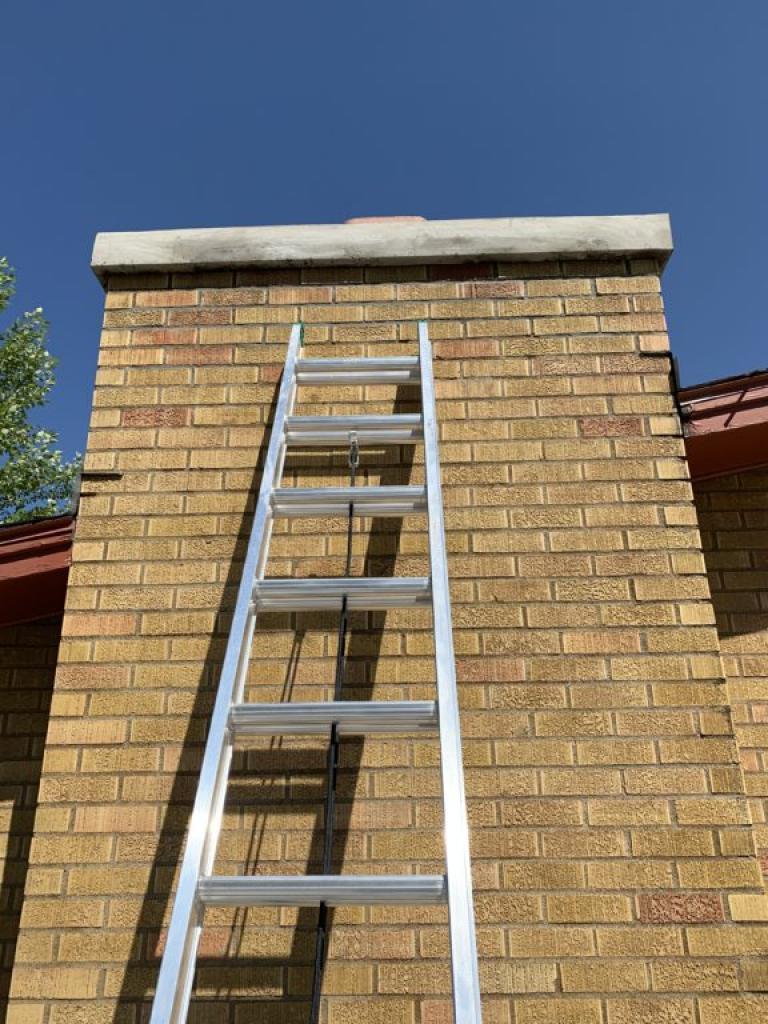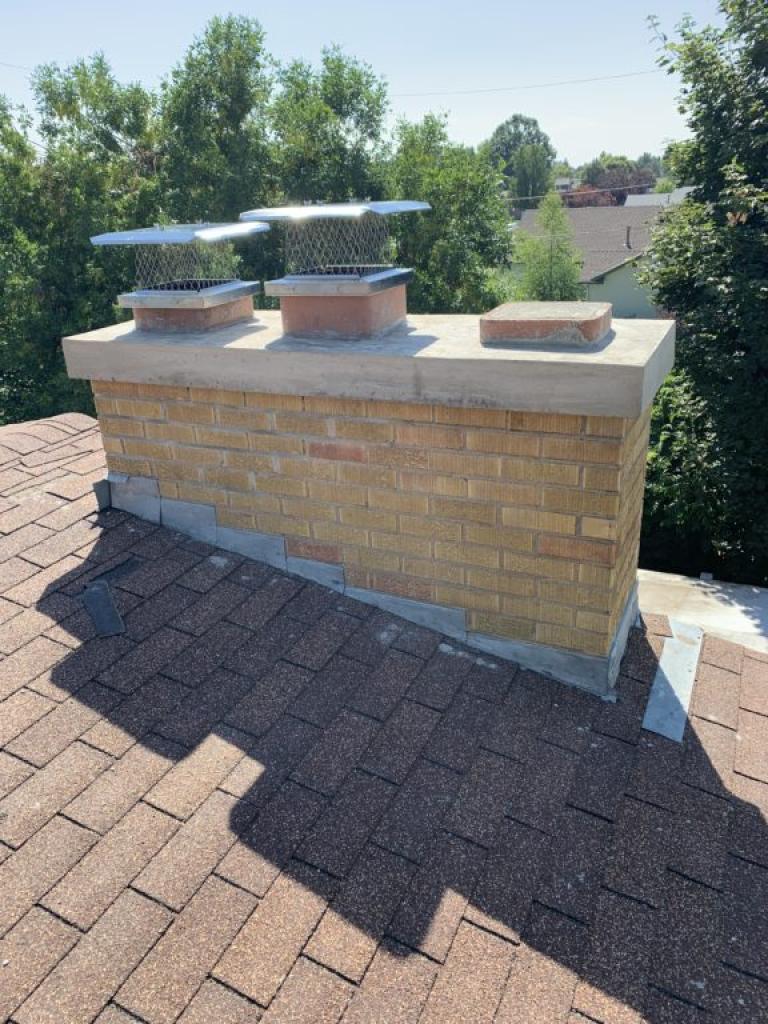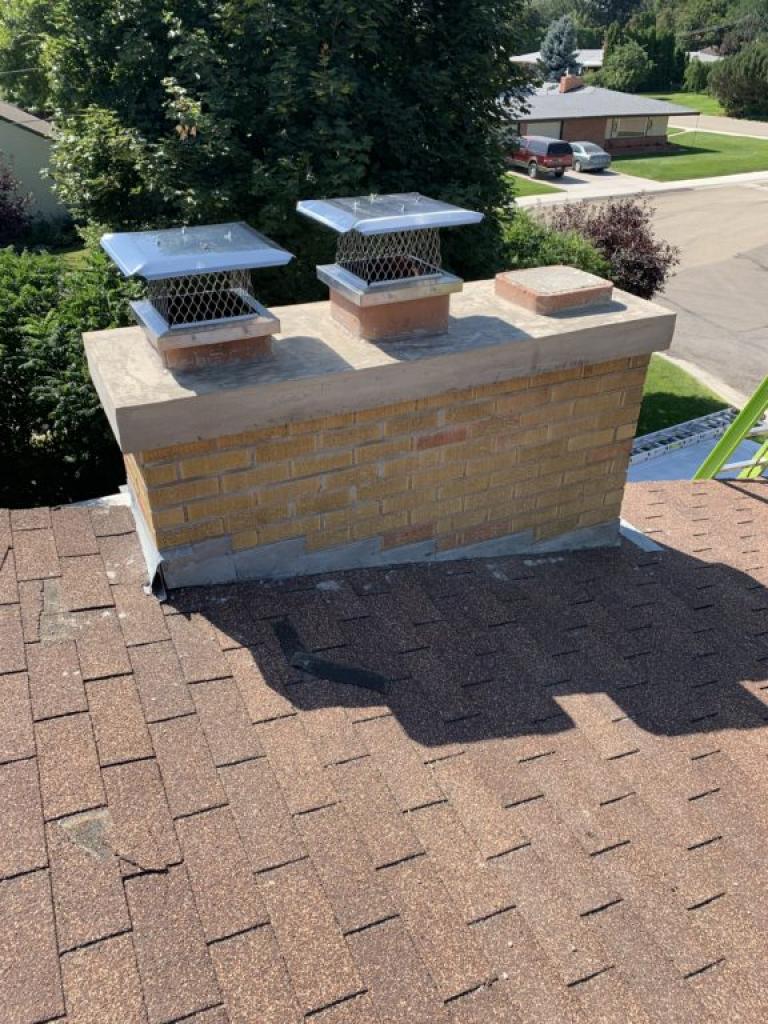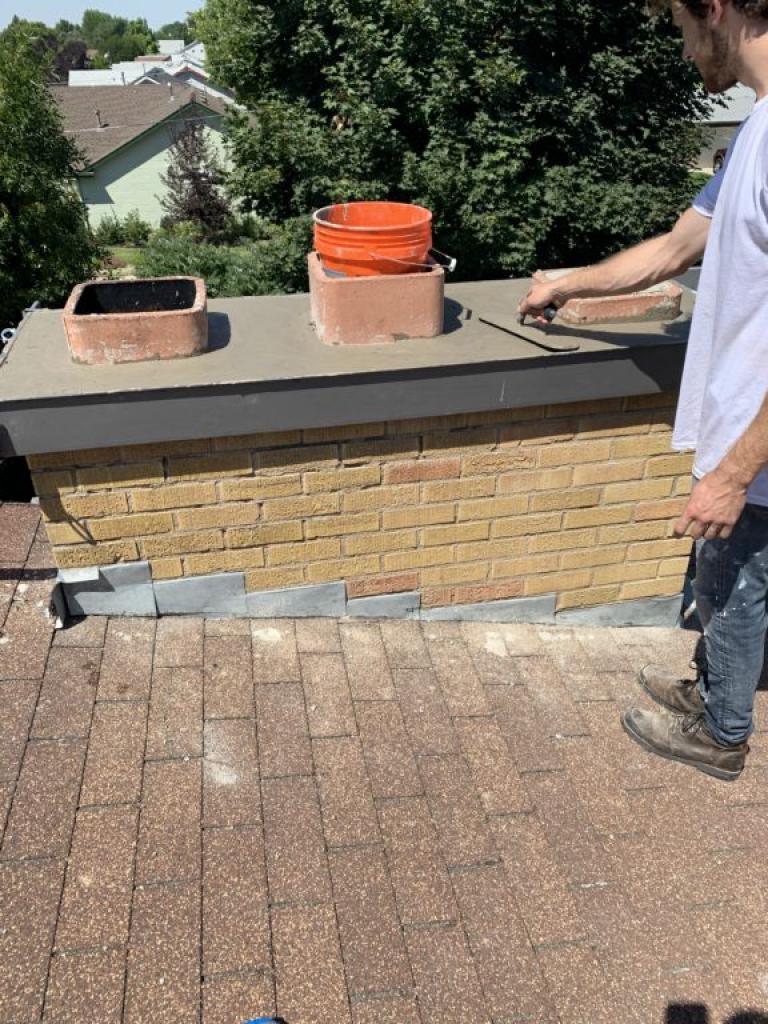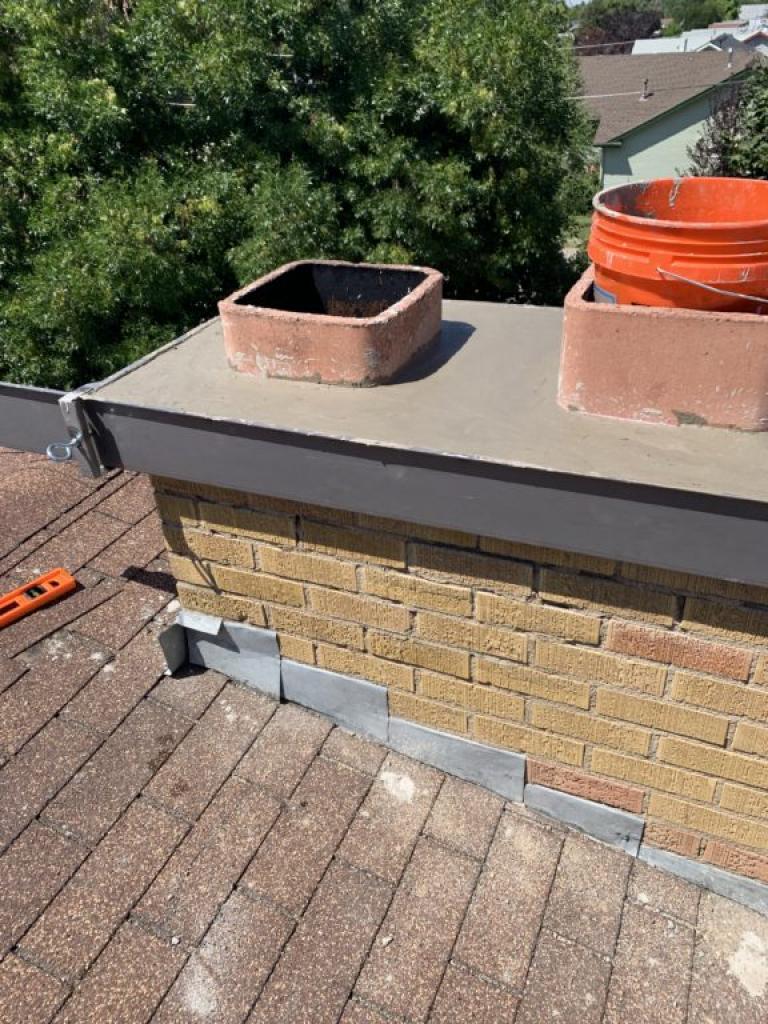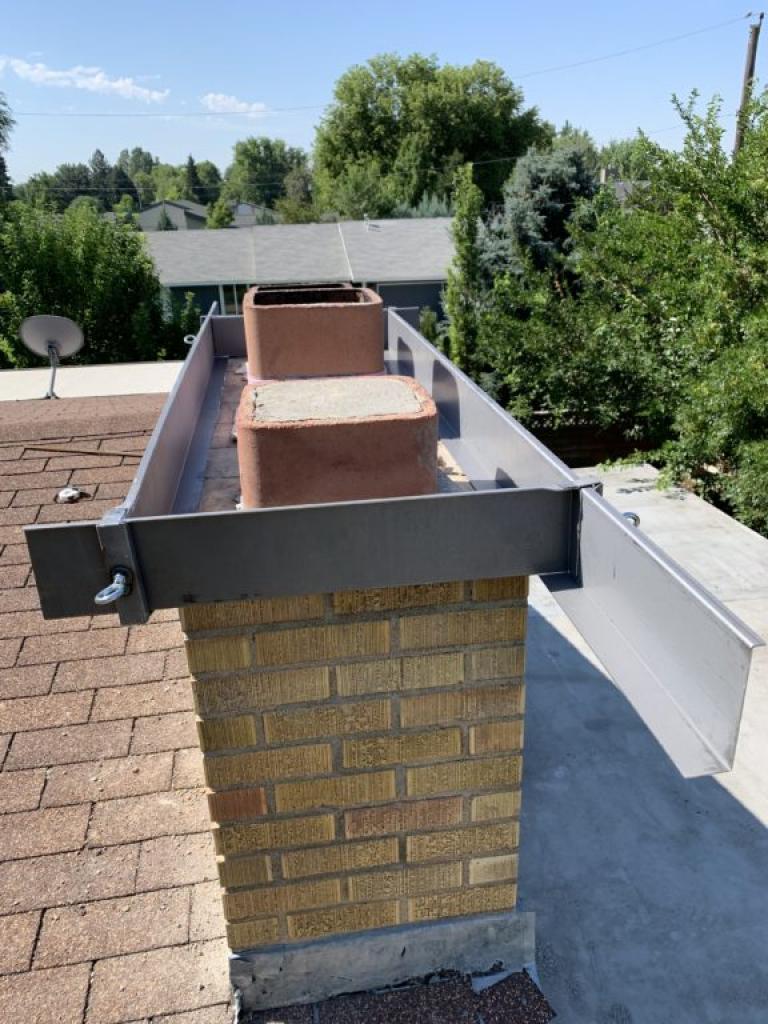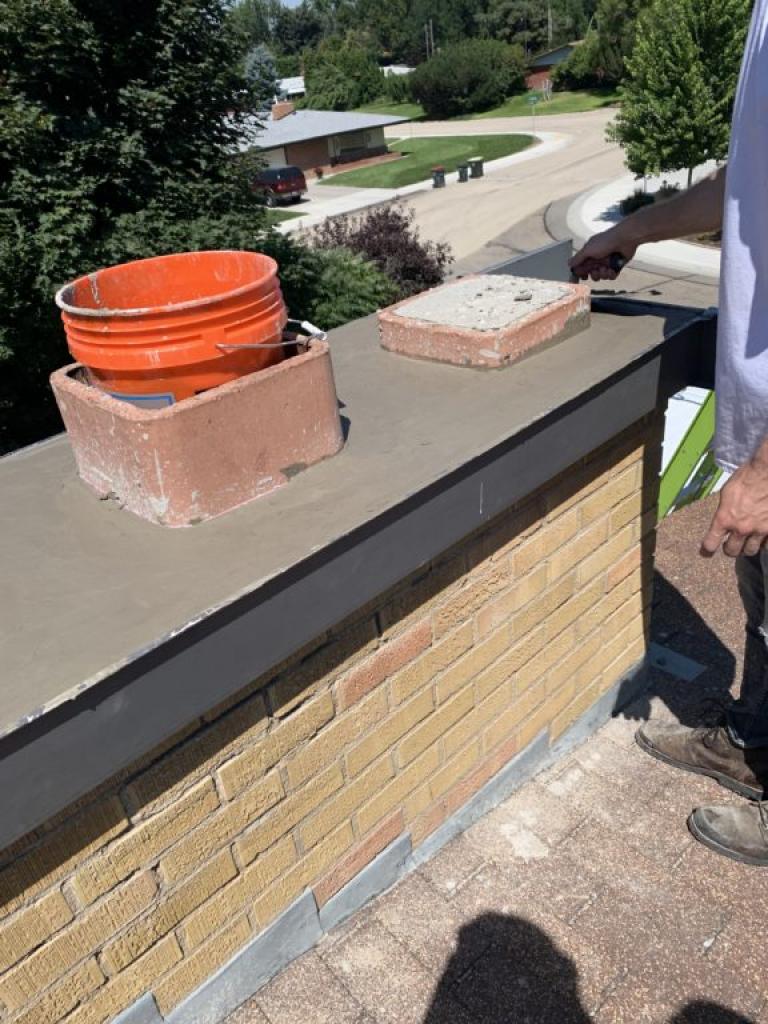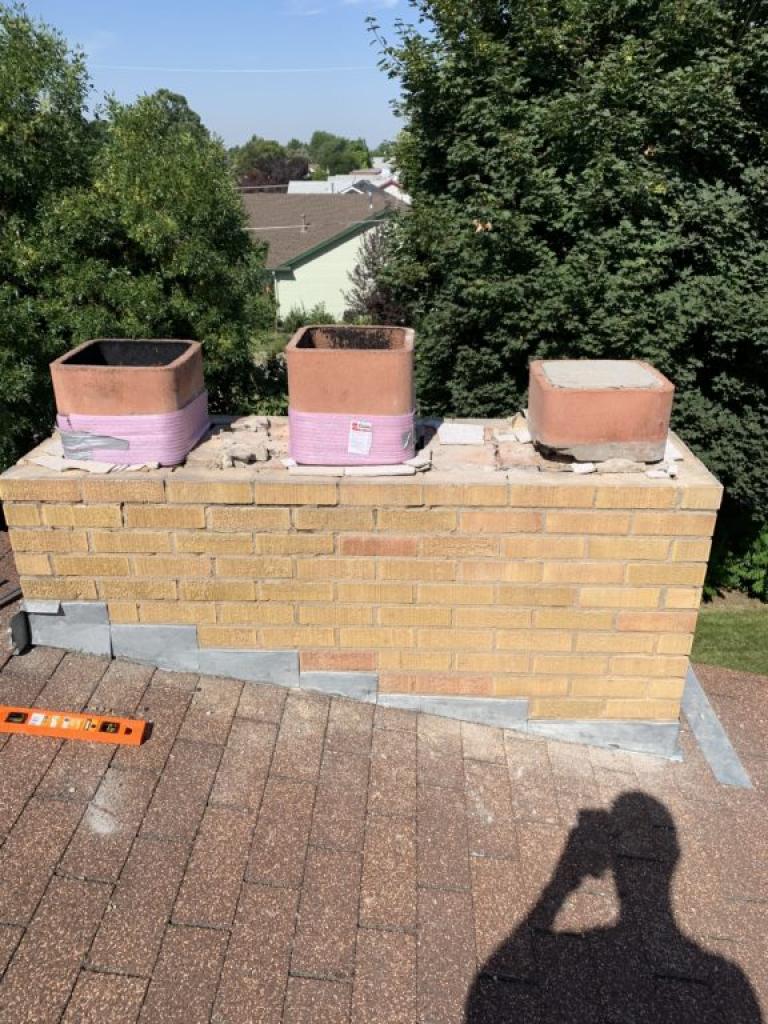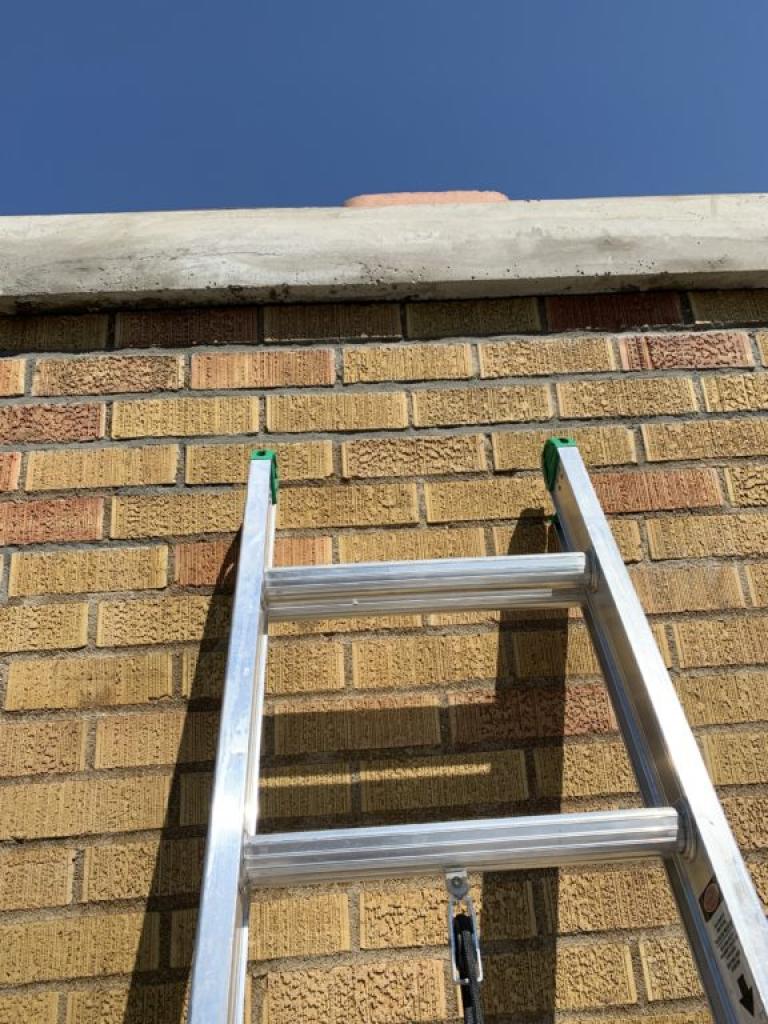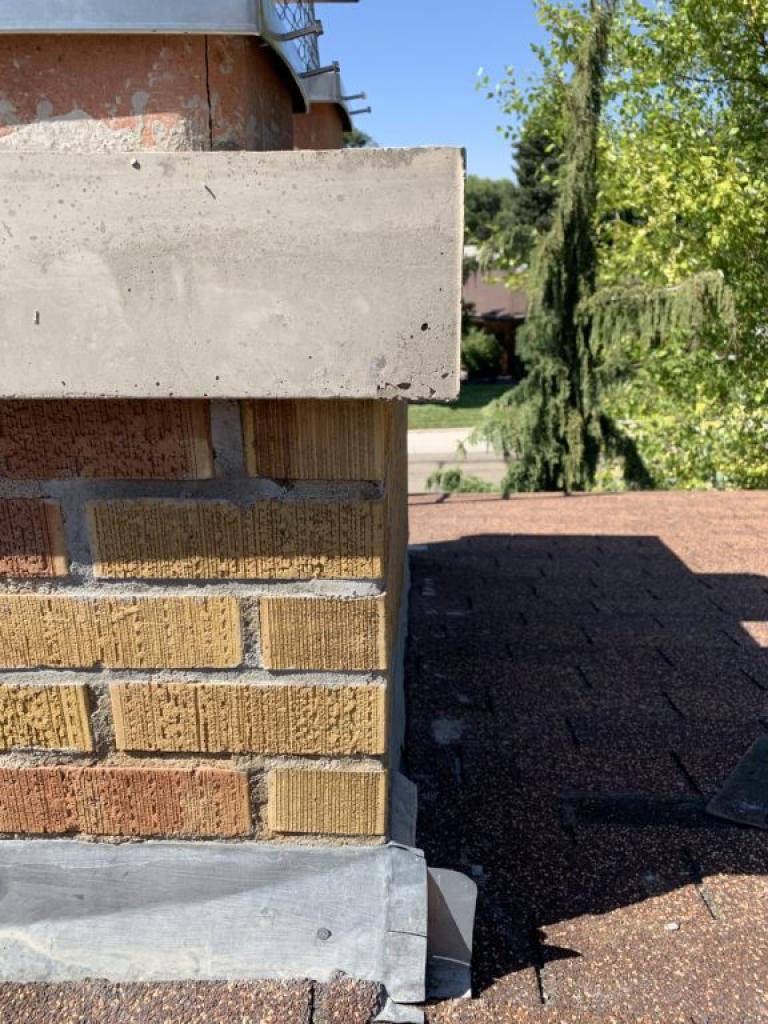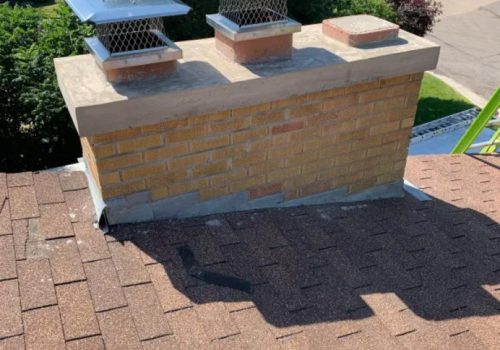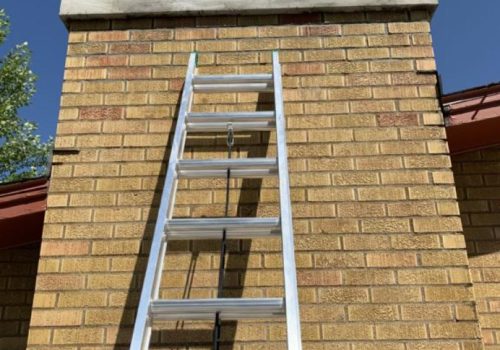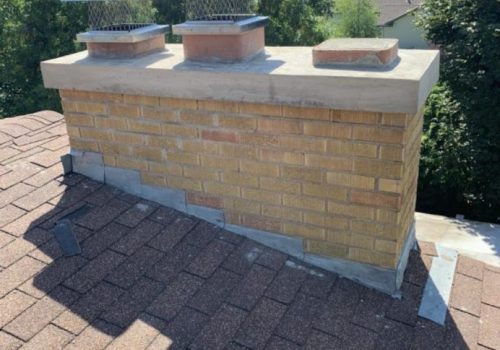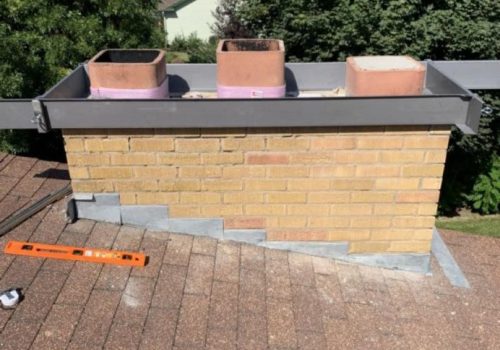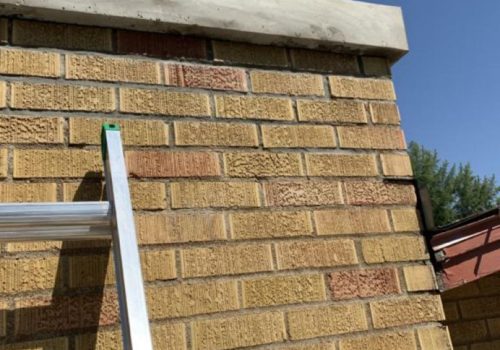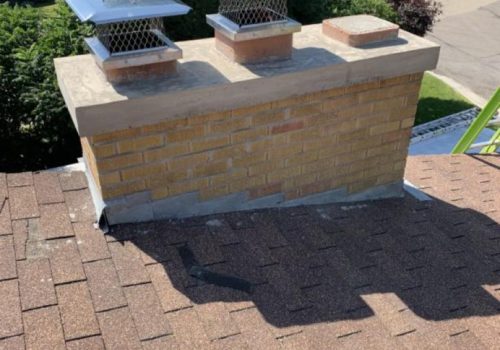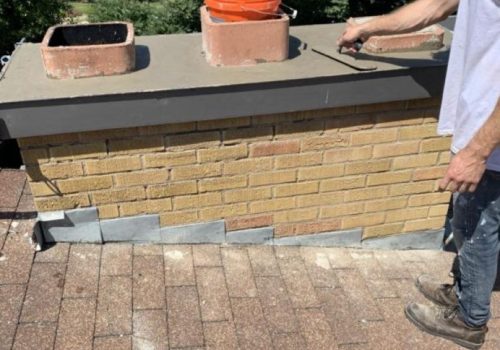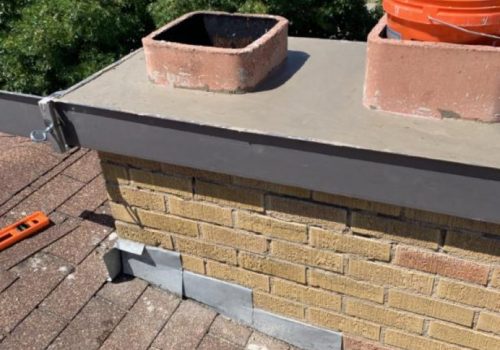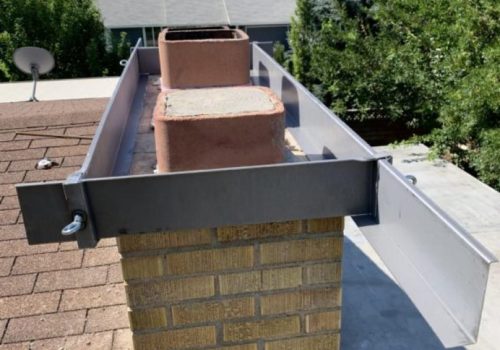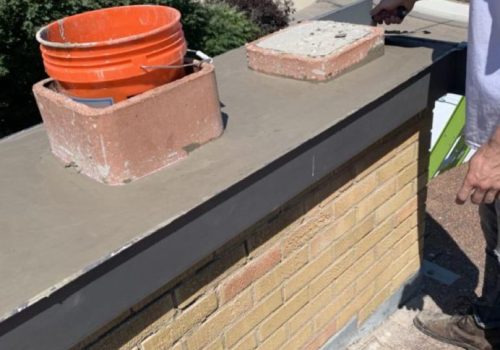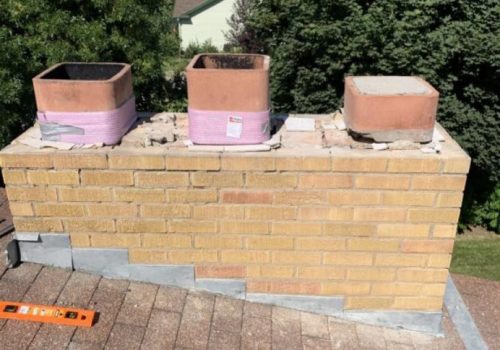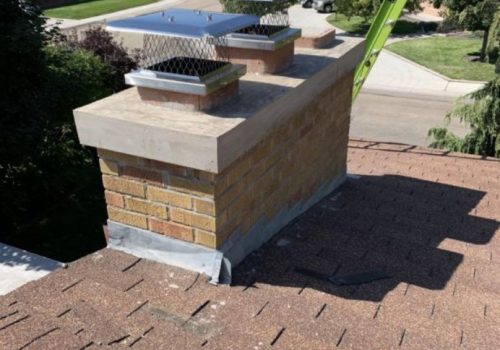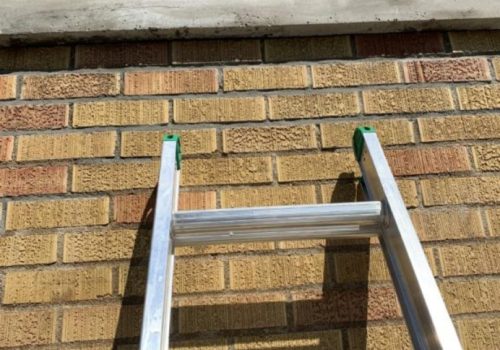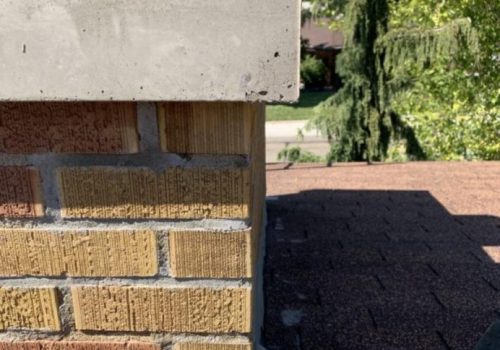We were fortunate to catch this cracked crown before it caused significant damage. Significant cracks had led to the beginnings of loose mortar and damaged bricks. It was the perfect time for this chimney to receive a new concrete crown pour and Tuckpointing.
Take a look through the gallery below to see how the process was accomplished. (The roof was being replaced right after we finished our work, so don’t mind the mess)
The first step is the removal of the defective mortar crown. For this project we elected to remove the top row of bricks that were deteriorating as well. The alternative would be to replace the individual bad bricks. Removing the top row allowed us to pour a much thicker crown and eliminate the hassle of hunting down matching bricks.
Step two is measuring and installing the metal crown forms to hold the concrete and rebar. Once the forms are set, we cut the rebar and install the bond breaks around the flue tiles. Just before the mixing begins we oil the forms for easy removal.
Step three is mixing and pouring the concrete, adding the rebar and fibers, and then smoothing for a nice top surface.
Tuckpointing was then performed while the concrete continued to set up. Tuckpointing is the removal of loose mortar between bricks with an angle grinder and then refilling the joints with mortar. This can be tedious if you want it to look presentable when you are finished.
When the tuckpointing was finished, the forms were ready to be removed. Once those were off, we applied the Chimney Saver Waterproofing to the entire chimney and crown to keep it from taking on water when it rains.
The last step for this project was installing new stainless steel chimney caps and cleaning up the roof and mixing station.
A concrete crown with overhanging edge and rebar will be around for a long time. We modeled these crowns after midwest chimneys with the same style of crown that are 100+ years old and counting. Crown pour and Tuckpointing projects typically take a day or less.


